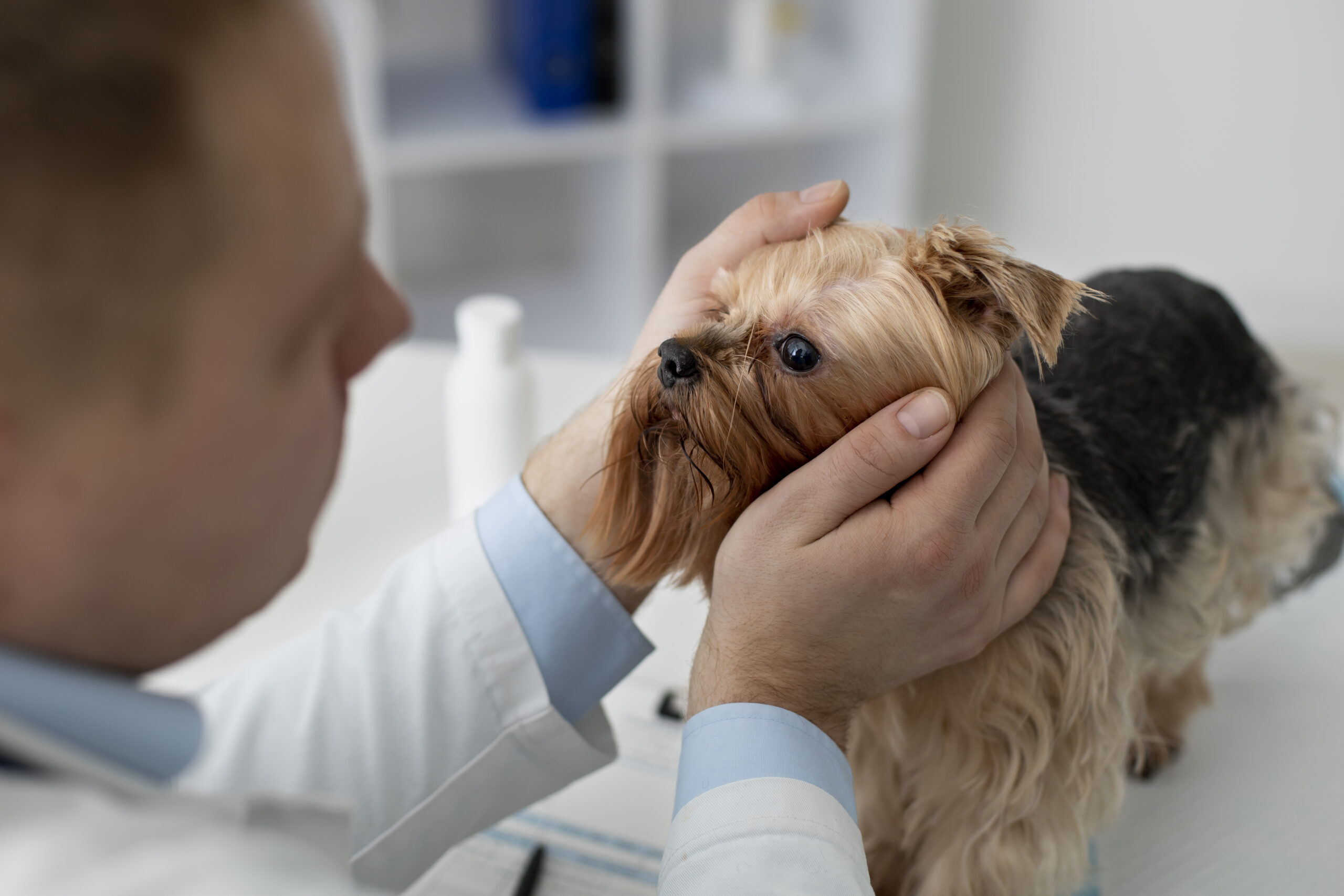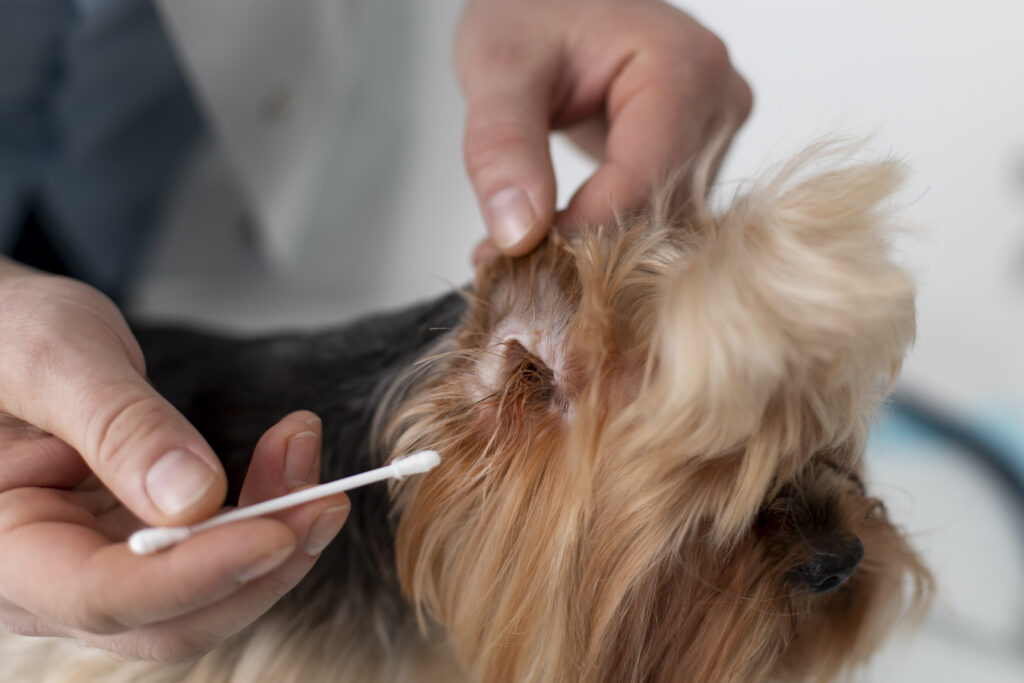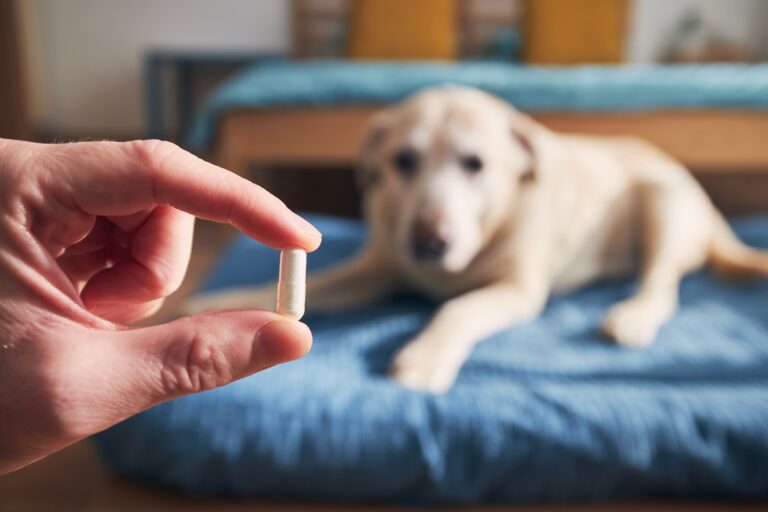
If you’re a pet lover, there’s not much more painful than watching your dog’s face in displeasure or scratching their ears. A ear infection in dogs is one of the most frequent health issues that befall our beloved animals. While it appears to be simple at first, an ear problem that isn’t addressed could lead to extreme discomfort, hearing loss, and eventually complications.
The article below will walk you through everything you need to be aware of the common ear infection in dogs will provide you with information on the causes as for symptoms, and ways to help your dog become better and stay healthy.
Understanding Ear Infections in Dogs

A dog’s ear infection in dogs may occur when bacteria, yeast, or parasites get into the ear canal, which causes inflammation and discomfort. Dogs have an ear canal that is more inclined than humans, and this makes it harder for water and debris to escape from the ear. The entrapped conditions are ideal for bacteria and fungi to thrive.
Three types of ear infection in dogs.
- Otitis Externa is an ear condition that affects the ear’s canal, which is located outside, and is thought to be the most prevalent type.
- Otitis Media is a condition that affects the middle ear.
- Otitis Interna is an ear condition that affects the inner ear. It can cause imbalance issues and eventually the loss of hearing.
Common Causes of Ear Infection in Dogs
Understanding the causes of anemia in dogs can help you prevent the possibility of it happening at all. Here are some of the most frequently cited causes:
1. Allergies
Like humans, dogs may also be afflicted by allergies. Environmental allergies or food allergies (like pollen, dust, or even mould) can trigger inflammation in the ears. This inflammation can make it harder for infections to develop.
2. Excess Moisture
Dogs who like to swim or frequent baths will more often experience an ear infection in dogs because of the fact that humidity creates a warm and humid environment in which yeast and bacteria to grow quickly.
3. Ear Mites
Ear mites could appear as tiny parasitic animals that reside in the ear canal. They can cause intense itching, irritation, and even swelling. Dogs and puppies that are exposed to animals that are infected are at greater risk.
4. Excessive Wax or Debris
A buildup of earwax dust or other foreign objects could create obstructions within the ear canal, which could cause irritation as well as an increase in the amount of bacterial growth.
5. Hormonal Imbalances
Diseases like Cushing’s disease and hypothyroidism could make dogs more susceptible to diseases.
6. Structural Issues
Certain breeds, particularly those that have a floppy ear, like Cocker Spaniels and Basset Hounds, are more susceptible to developing ear problems in dogs due to their ears’ structure. The ear structure restricts airflow and keeps moisture.
Symptoms of Ear Infection in Dogs
Being aware of early signs can make a huge difference for your dog’s health and healing. These are some of the most commonly identified indicators for ear issues that dogs suffer from:
- The head appears to be continuously moving or tilting.
- A habit that involves constantly scratching or pawing your ears
- The ear could be either red or swollen. Ear
- Odor of fouling that emanates through the ear
- Brown, yellow, or bloody discharge
When your pet shows any of the signs listed above, it is vital to consult an animal veterinarian immediately.
How Veterinarians Diagnose Ear Infections in Dogs

A vet will first examine your dog’s ears using an otoscope. This will check for redness, swelling, and discharge. They will also take samples of ear fluid for examination under a microscope. This will help determine if the issue is caused by yeast or bacteria, or even mites.
In some cases, when the infection does not cease to occur, your physician may run tests for allergies or check other health issues that may be causing the recurring infections.
Effective Remedies for Ear Infections in Dogs
If you have to cure a dog’s ear problem, the best approach will depend on the underlying cause and extent of the issue. Here are the top remedies and treatments:
1. Professional Cleaning
Your veterinarian will start by cleansing the ears of your dog with a thorough cleaning to eliminate the accumulation of wax, debris as well and drainage. This will aid in the functioning of the medication more efficiently and prevent the formation of.
2. Topical Medications
Most cases of dog ear infections can be managed by using topical remedies that include antifungals, antibiotics, and steroids to reduce the inflammation. It is essential to apply the drops in accordance with the directions that your veterinarian has given you.
3. Oral Medications
For severe or more serious illnesses, oral antibiotics or antifungal medications are commonly recommended. The use of painkillers can be recommended for your dog when they are experiencing severe discomfort.
4. Home Remedies and Natural Solutions
Certain mild illnesses can be controlled by using natural remedies. But you must consult with your doctor prior to trying these techniques. Common natural solutions include:
- Apple Cider Vinegar Solutions assist in fighting off bacteria and yeast, but they must be diluted appropriately and should not be used on open wounds.
- Coconut Oil: It is antifungal and can reduce irritation.
- ALOE VERA Gel helps reduce itching and inflammation.
5. Allergy Management
If allergies are the primary cause of the issue, your doctor may suggest changes in your diet and allergy tests. Additionally, you can take medication to help treat allergic reactions and to prevent the possibility of developing a new illness of ear infection in dogs.
Preventing Ear Infections in Dogs
Preventive measures are always efficient than treatments. Follow these guidelines to keep your pet’s ears healthy and clean:
- Make sure your ears are dry after a bath or a swim.
- Examine your ears weekly for redness, odor, and wax accumulation.
- A Trim of Ear Hair. If your dog’s hair falls on their ear, this retains moisture.
- Make use of a Healthy Diet in order to improve the dog’s defense systems.
- Do not insert cotton swabs deep into the ear.
A few minutes of affection every week could protect your dog from the discomfort of chronic illness as well as a costly visit to the vet.
When to See a Vet
Don’t ignore the symptoms of a dog’s ear infections, particularly when they last more than a couple of days or are frequent. Contact a vet immediately if your dog:
- Cries whenever their ears are the focus of their focus
- The person is unable to maintain balance or has difficulty with coordination.
- Are there any swellings or pus coming out of your ear?
- It creates an unpleasant odor, which grows
The initial treatment can prevent the infection from spreading into the ear, which can cause irreparable damage.
Emotional Impact on Pet Owners
It is extremely hard to watch your loved ones suffering. The feeling of being helpless as you watch the pet cry or scratch could be an extremely stressful feeling. Remember, your concern and quick reaction could have an impact. Dogs depend on their hearing for communicating with the world at the same time as us, so taking good care of their hearing is one of the most significant actions you can demonstrate to them.
Conclusion
A dog’s ear infection isn’t an ordinary problem. It could be very uncomfortable for your pet, which demands immediate attention and care. With the correct information about preventive measures and timely treatment, you’ll be sure that your dog is not in discomfort and is full of tails and wags.
Remember that your pet has faith in you completely. Cleaning their ears and maintaining their health is one of the most basic yet effective ways to show appreciation health product.
Frequently Asked Questions
Q1. What is the most frequent cause of ear infections in dogs?
The most common reason is a combination of water and bacteria. Dogs that swim often or have ears that appear loose are more prone to infections.
Q2. Do the ear infections of dogs go away in a single day?
It is not the case. The majority of ear infections require treatment by a vet. If the problem isn’t addressed, it can get worse and create ongoing problems.
Q3. What can I do to avoid a dog’s ear infection?
Be sure to keep your ears clean and dry, particularly after bathing or swimming. A regular check of the ears and cleaning them with the solution that has been approved by a vet can help in a great way.
Q4. Do certain dog breeds have a higher chance of developing ear diseases?
Yes, breeds with long or floppy ears, such as Cocker Spaniels, Basset Hounds, and Labradoodles,s are at risk of poor air circulation.
Q5. Can diet affect ear infection in dogs?
It is true. Allergies to food or inadequate nutrition can cause inflammation that leads to ear infections. A balanced diet can improve the immune system and overall health of the ears.
Q6. What’s the standard length of time it takes for an ear wound to heal?
Ear infections of a small size are usually cured in less than a week, if treated properly and treated properly, but more severe cases can take up to a few weeks.




